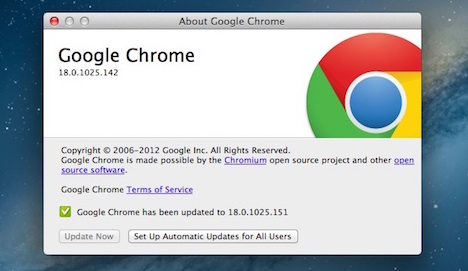Google Chrome is one of the most popular web browsers, known for its speed, efficiency, and user-friendly interface. However, over time, it may start slowing down due to accumulated cache, excessive extensions, or outdated settings. A sluggish browser can lead to frustrating delays, reducing productivity and making online browsing less enjoyable.
Fortunately, there are several ways to optimize Chrome for a smoother and faster experience. Whether you’re dealing with slow loading pages, lagging performance, or high memory usage, implementing the right tweaks can significantly improve Chrome’s speed. From clearing cache and disabling unnecessary extensions to enabling hardware acceleration and adjusting experimental settings, there are numerous strategies to enhance Chrome’s performance.
In this guide, we’ll explore 20 of the best tips to speed up Google Chrome, ensuring faster browsing and improved efficiency. These tips cater to both casual users and power users looking to maximize their browsing speed. By following these steps, you can boost Chrome’s performance, reduce crashes, and enhance your overall browsing experience.
1. Update Chrome
Keeping Google Chrome updated ensures you have the latest performance improvements and security fixes. An outdated browser can slow down browsing speed due to compatibility issues and unpatched vulnerabilities. To update Chrome, go to Settings > About Chrome, and the browser will automatically check for and install updates. Restart Chrome after updating to apply changes. Regular updates optimize memory usage, improve efficiency, and provide new features that enhance your browsing experience for faster and smoother performance.
2. Remove Unnecessary Extensions
Extensions add extra functionality to Chrome but can also consume system resources and slow down browsing speed. Too many active extensions increase memory usage, causing lag and slower page loading times. To remove unnecessary extensions, go to chrome://extensions/ and disable or delete ones you no longer use. Keeping only essential extensions reduces background processes, enhances security, and improves overall browser speed, making Chrome faster and more responsive while reducing crashes and slowdowns.
3. Disable Unused Plugins
Although Chrome no longer supports NPAPI plugins, some built-in plugins may still affect performance. Unused plugins can consume resources and slow down your browser. To manage them, type chrome://settings/content in the address bar and adjust permissions for site plugins. Disabling unnecessary media, PDF viewers, or hardware access improves browsing speed and enhances security. Streamlining active plugins ensures Chrome runs efficiently, leading to faster page loads and a smoother browsing experience.
4. Clear Browsing Data
Over time, cached files, cookies, and browsing history accumulate and slow down Chrome. Clearing browsing data helps free up storage and improve speed. To do this, go to Settings > Privacy and security > Clear browsing data, then select cached images, cookies, and history. Choose “All time” for a deep clean. Regularly clearing data removes outdated cache files, enhances loading times, and prevents sluggish performance, making Chrome run more efficiently.
5. Enable Hardware Acceleration
Hardware acceleration allows Chrome to utilize your GPU (Graphics Processing Unit) for rendering graphics-intensive tasks like videos, animations, and web applications. Enabling this feature reduces CPU load, leading to faster performance. To enable it, go to Settings > System > Use hardware acceleration when available and toggle it on. Restart Chrome for changes to take effect. This improves speed, enhances visual rendering, and ensures smoother performance when browsing, streaming, or using complex web apps.
6. Close Unused Tabs
Having multiple tabs open in Google Chrome consumes a significant amount of system memory and CPU resources, slowing down your browsing experience. Closing unused tabs frees up memory, allowing Chrome to run more smoothly. If you need to keep track of multiple pages, consider using bookmarks or tab management extensions. Additionally, features like Chrome’s “Tab Groups” can help organize tabs while minimizing resource usage. Reducing the number of active tabs ensures faster browsing and improved overall performance.
7. Use the Chrome Task Manager
Google Chrome has a built-in Task Manager that lets you monitor and close resource-hogging tabs, extensions, or processes. To access it, press Shift + Esc or go to More Tools > Task Manager. Here, you can view memory and CPU usage for each tab or extension. If a particular process is consuming too many resources, you can end it to improve speed. Regularly checking and managing processes can help Chrome run more efficiently.
8. Enable “Preload Pages”
Chrome’s “Preload Pages” feature speeds up browsing by preloading webpages that you are likely to visit based on your browsing habits. This reduces load times and makes navigation seamless. To enable it, go to Settings > Privacy and Security > Cookies and Other Site Data, then turn on “Preload pages for faster browsing and searching.” This feature uses predictive algorithms to enhance your browsing experience by preloading content before you even click on it.
9. Reset Chrome Settings
Over time, Chrome settings may become cluttered with extensions, cached data, and modified configurations that can slow down performance. Resetting Chrome restores it to its default state, removing unnecessary changes without affecting your bookmarks and saved passwords. To reset, go to Settings > Reset Settings > Restore settings to their original defaults and confirm. This action removes slow-performing extensions, unwanted settings, and accumulated data, helping Chrome run faster and more efficiently.
10. Manage Background Apps
Even after closing Chrome, certain extensions and apps continue running in the background, consuming system resources. Disabling unnecessary background apps can significantly improve performance. To do this, go to Settings > System and toggle off “Continue running background apps when Google Chrome is closed.” This prevents Chrome-related processes from using CPU and RAM when not in use, allowing your system to run more smoothly and enhancing overall browser speed.
11. Enable Experimental Features (Flags)
Google Chrome offers hidden experimental features, known as “flags,” that can enhance speed and performance. By typing chrome://flags/ in the address bar, you can access various advanced settings. Features like “Parallel Downloading,” “GPU Rasterization,” and “Back-forward cache” can improve browsing speed by optimizing how Chrome loads pages. However, since these are experimental, some may cause instability. Always test changes cautiously and reset flags to default if you experience issues.
12. Use a Lightweight Theme
Chrome’s default or heavy custom themes can consume extra system resources, slowing performance. Opting for a lightweight theme, such as Chrome’s classic theme or a simple, minimalistic design, reduces memory usage. A basic theme ensures smoother scrolling, faster tab switching, and improved overall responsiveness. You can find and install lightweight themes from the Chrome Web Store under the “Themes” section. Keeping things simple often leads to better browsing performance.
13. Scan for Malware
Malware, spyware, or unwanted extensions can significantly slow down Chrome. Use Chrome’s built-in cleanup tool by navigating to chrome://settings/cleanup, or run a full system scan using reputable antivirus software. Malicious software can cause high CPU usage, pop-ups, and sluggish performance. Regularly scanning for threats helps maintain a fast and secure browsing experience. Additionally, remove suspicious extensions or programs that could be interfering with Chrome’s performance.
14. Disable Unnecessary Startup Pages
Chrome allows users to open multiple pages on startup, but too many can slow down launch time. To streamline the startup process, go to chrome://settings/onStartup and set Chrome to open a single blank tab or your most-used website. Disabling unnecessary startup pages reduces memory consumption and ensures Chrome launches quickly. This is particularly useful for devices with limited RAM, leading to faster browsing from the moment you open the browser.
15. Use a Fast DNS Provider
A slow Domain Name System (DNS) provider can delay website loading times. Switching to a faster DNS, such as Google DNS (8.8.8.8 and 8.8.4.4) or Cloudflare DNS (1.1.1.1), can enhance browsing speed. To change DNS settings, adjust your network settings in your operating system. A fast DNS provider reduces lookup times, making websites load more efficiently. Using a reliable DNS also improves security and reduces latency, leading to a smoother browsing experience.
16. Disable Site Notifications
Many websites request permission to send notifications, which can slow down Chrome and cause distractions. Disabling site notifications reduces background activity and prevents pop-ups from using system resources. To turn them off, go to Settings > Privacy and security > Site settings > Notifications and block or disable them entirely. This not only improves browsing speed but also enhances security by preventing malicious sites from spamming notifications. It’s an effective way to streamline your browsing experience.
17. Enable Reader Mode
Reader Mode simplifies web pages by removing ads, pop-ups, and unnecessary elements, allowing for faster loading times and a distraction-free reading experience. To enable it, type chrome://flags in the address bar, search for “Reader Mode,” and enable it. Once activated, you can access it via the browser menu. This mode improves Chrome’s performance, reduces data usage, and enhances readability, making it especially useful for reading articles or blog posts without interruptions.
18. Use Chrome Lite Mode (Mobile)
Chrome Lite Mode, also known as Data Saver, speeds up browsing by compressing web pages before loading them. This reduces data usage and improves page load speeds, especially on slow connections. To enable it, go to Settings > Lite Mode and turn it on. This feature is ideal for mobile users with limited bandwidth, ensuring faster browsing while maintaining a seamless experience. Note that Chrome Lite Mode is no longer available in the latest versions.
19. Disable Automatic Downloads
Automatic downloads can slow down Chrome by consuming bandwidth and system resources. Disabling them ensures that files aren’t downloaded without your knowledge, improving both speed and security. To manage this, go to Settings > Privacy and security > Site settings > Additional permissions > Automatic downloads and block untrusted sites. This prevents unnecessary downloads, reduces clutter, and enhances Chrome’s overall performance, allowing for a smoother and faster browsing experience.
20. Use a Content Blocker
Content blockers, such as ad blockers and script blockers, prevent unnecessary elements like ads, trackers, and pop-ups from loading. This significantly speeds up Chrome by reducing the amount of data and scripts that need to be processed. Extensions like uBlock Origin or AdGuard help block unwanted content, improving both performance and security. By reducing resource-heavy elements, content blockers ensure faster page loading, better browsing efficiency, and a cleaner, distraction-free online experience.

























